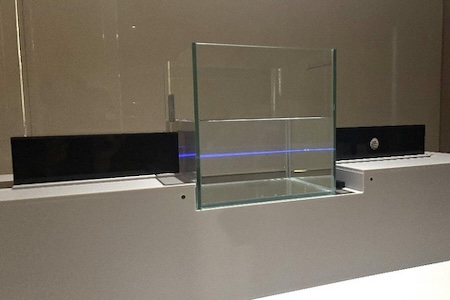
Unmanned Surface Vehicles
Discover cutting-edge solutions from 8 leading global suppliers
In a collaborative mission for Ifremer, Exail’s medium-range unmanned surface vessel (USV), DriX H-8, and Ifremer’s 6000-meter-depth autonomous underwater vehicle (AUV), Ulyx, were jointly deployed and operated.
This operation, conducted off the coast of La Ciotat in southern France, demonstrated both partners’ capabilities in autonomous systems and sensor technologies. Ulyx was deployed from Ifremer’s vessel L’Europe, while DriX was operated remotely from the Exail Remote Operation Center at the La Ciotat shipyard.
Testing Sams for High-Resolution Seabed Mapping
A primary objective of the sea trials was to test and qualify advanced technologies, including Exail’s Synthetic Aperture Mapping Sonar (Sams 150) integrated into Ulyx. The system was evaluated across various survey scenarios to validate its operational performance.

The Sams 150 enables high-resolution seabed mapping and object detection by combining the operability of traditional sidescan sonar with the enhanced resolution of synthetic aperture sonar (SAS). Integrated with Exail’s Phins inertial navigation system and other positioning technologies, it offers precise motion compensation and centimetric georeferenced imaging.
Its capabilities align with Ulyx’s multi-scale survey approach, which includes broad MBES mapping, high-resolution acoustic imaging via Sams 150, even in rough topography, and close-range optical mapping through photogrammetry.
In collaboration with Exail’s sonar teams, Ifremer developed adaptive strategies for varied dive scenarios to optimize system performance at depths between 30 and 70 meters. Trials confirmed that Sams 150 consistently delivered high-resolution sonar imagery down to 5 cm at 50 meters altitude, surpassing conventional methods in data quality and operational efficiency.
Cooperative Operation: Ulyx and DriX in Action
Another key objective was to evaluate the cooperative operation between Ulyx and DriX. DriX was used as a surface relay to provide acoustic positioning and communication for the AUV, linking it to the mother vessel via satellite communications and Exail’s CortiX* software interface. This independent monitoring and positioning approach could be a breakthrough for complex, deep-sea missions.
Optimized for hydro-acoustic equipment, DriX demonstrated significantly improved positioning performance using Exail’s Gaps system. While L’Europe experienced signal loss beyond 1,300 meters, DriX maintained stable acoustic positioning down to 2,300 meters. Its hydrodynamic hull and 2-meter-deep gondola installation help create a low-noise environment for sensitive acoustic systems.
The trials also assessed acoustic data transfer between DriX and Ulyx using a “Micromodem” from the Woods Hole Oceanographic Institution (WHOI). While WHOI provided the modem, the tests demonstrated the effectiveness of integrating it into a cooperative multi-platform system. All tested scenarios were successfully validated, confirming the potential for reliable communication and coordination between autonomous systems during complex missions.
A Milestone in Autonomous Multi-System Exploration

Olivier Moisan, DriX Operations Manager, commented, “We are thrilled to witness DriX and Ulyx collaborating for the first time. This partnership with Ifremer underscores Exail’s dedication to advancing autonomous systems and sensor technologies, providing unmatched capabilities for complex marine operations. Beyond developing platforms, we are also creating autonomous collaborative behaviors through software like CortiX.“
This collaboration represents an important milestone in the demonstration of multi-platform interoperability. While DriX has previously operated with various underwater robots, this was its first mission with Ulyx, showcasing how their capabilities complement each other in complex operational environments. For Ifremer, the ability to monitor Ulyx’s advanced, multi-functional dives down to 6,000 meters with minimal reliance on the support vessel highlights the growing potential of coordinated USV, AUV, and ROV operations.
The integration of a highly versatile USV with a deep-diving AUV opens new possibilities for future missions in environmental monitoring, deep-sea exploration, and subsea inspection.

















